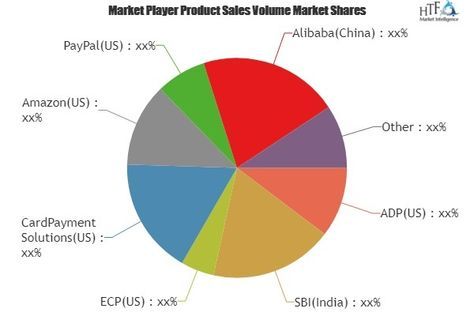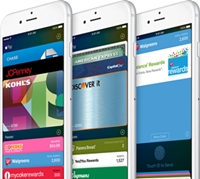Key trends in mobile payments
In terms of initiatives in the mobile payment market, USA is among the world leaders. But we are already well ahead of Western Europe in terms of the use of these technologies, and in some areas also Asia and… Africa. Is this a bad thing? Not. This means that we are at an ideal moment for the development of proprietary innovations.
There is still room to implement them before our market is divided among international players. This is known to experts in our domestic market who have managed to create proprietary mobile payment applications or who are users of these systems. Here are eight trends in mobile payments as they emerge from their experience.
Some of these to a greater or lesser extent have been evident for several years, others have emerged very recently.
1. Mobile payments as a distribution channel for financial products
There is no doubt that currently mobile payments are still a niche product. They are used by about 5% of smartphone users. Customers are only just getting used to the functionality of the apps by keeping them simple and focused on the basic task – enabling payments using only the phone. This, on the other hand, makes it difficult to maintain the profitability of the application, as payment commissions alone are an insufficient source of income.
The situation will change when apps become a fully functional transaction channel with sales potential. Their advantage is very high frequency of use and presence always at hand.
Wojciech Bolanowski, director of the electronic banking division of PKO BP: When planning the implementation of IKO, we looked at the development of the market in the perspective of the next 10 years when the mobile application will be the primary channel of customer contact with the bank. Our goal is to provide a whole ecosystem of added value, where the customer can go through the whole process of choosing new products. Thanks to data from the application, such as geolocation, the offer can be tailored perfectly to the user’s needs.
Tailoring the offer and the feeling that we are in constant contact with the bank will also be an element that strongly builds customer loyalty.
2. Prepaid alone is not enough – bank account integration is key
Customers choose those systems that are flexible in terms of the source of money. A cell phone alone is not enough to make a mobile payment, as a source of money is still needed, and relying solely on the prepaid model does not give the technology a chance to spread. This is especially true in the area of offline payments.
Michal Ornatowski, Bank Pekao S.A.: What users mainly expect from mobile payments is more convenience and a solution to specific problems, such as the requirement to enter the card number and expiration date for online purchases, or to physically hold the card. The need to perform additional steps to top up the account often discourages those wishing to pay by mobile, as they prefer to use their own account funds directly.
This is also confirmed by the history of PeoPay development, where the number of users increased significantly when the PeoPay app was integrated with the bank account. Such a solution gives customers comfort by not having to keep an eye on the balance on the next account and having constant insight into the balance and history of their current account.
3. Acceptance of payments without a terminal
The main competitor of mobile payments is not payment cards, but cash. Therefore, for their popularization, it is necessary to simplify the transaction handling on the merchant side to the level of cash turnover. This means that payments must be accepted on a standard cash register or a smartphone, which every retailer already has access to. The concept of inserting additional hardware will meet resistance on the part of the vendor if only because of the additional costs.
This, on the other hand, will affect the problems of building acceptance networks.
Julian Kozankiewicz, COO of COMP Cetrum Innowacji: We were the first in USA to develop and launch a prototype of a fiscal cash register adapted to accept alternatives to credit cards
and cash payment methods. It is a device designed for use in any store, including a neighborhood one, as well as at a seasonal stand. We want to operate on a supermerchant model (connect with host-to-host partners) and provide a device unencumbered by any subscription fees e.g. for data transfer.In our functional model of the system, at any time we can add or modify remotely in our service platform, further payment systems, services or products to be available on the device menu.
4. Alternative payment systems are coming
The payments market is still open to novelty and largely undeveloped. In addition to the development of popular mobile payment systems, new alternative solutions are emerging, such as cryptocurrencies and digital cash. This market, so far seen as quite niche, is being entered by giants such as Google and Facebook.
The development of alternative payment systems is technologically advanced and partially standardized in EU legislation. Therefore, we can be sure that we are not dealing with a seasonal trend.
Maciej Luczak, board member of Billon: Existing payment systems, such as cards, but also many mobile applications are based on old technology, which reached its peak several decades ago. Innovation is needed to meet growing customer expectations. That’s why we have created the world’s first application that allows transactions using fully digital cash.
By using completely new solutions, we have been able to transcend the barriers and limitations that the system has generated so far. We have eliminated middlemen in the payment path, and thus commissions on transactions. We have shortened the time and made it possible to transfer money directly to the recipient, using any digital device, also without the need to access the Internet.
5 . Rational choice of payment method
There are two pieces of news: good and bad. The bad news is that Poles do not yet see a concrete and convincing reason to use mobile payments. Good – once they are convinced of this method and pay once then they will do it every day thereafter.
Studies show that consumers are guided by very rational reasons when spending their own money. No additional education will be needed if the benefit of switching from cash to mobile payments is clear.
Andrzej Olękiewicz, Strategic Account Director at TNS USA: In the case of mobile payments, we are in the early stages of a trend seen earlier in smartphone usage, in shopping behavior, for example. Such as showrooming. Already 20% of people admit that they happened to check prices of products online while shopping. Why they are doing it?
Because they see a concrete benefit. They must see a similar benefit in the use of mobile payments. It is comforting that mobile payments are perceived as safe in USA to a greater extent than in other European countries.
6. One-click-payment
That is, the pursuit of a one-click payment process, which so far only Amazon has succeeded in, and in USA mytaxi. Each subsequent touch of the screen distracts the user and reduces the chance of completing the transaction. Redirecting the user to an external bank or intermediary site is particularly risky.
Here, the chances that it will go through the entire process drop dramatically – the page may display incorrectly, and a momentary interruption in data transmission will result in error messages.
Krzysztof Urban, Managing Director of mytaxi: We were the first in the cab market to introduce payments made entirely within the app, without the need for external readers or going to sites that support mobile transactions. Already used by 40% of passengers. This is how we build their loyalty and competitive advantage. When paying by card, we replaced the need to enter the CCV number each time with a PIN code.
Thanks to this, you can order and pay for a cab with only your phone on you.
7. Easy integration more important than price
New payment solutions looking to build reach quickly must offer merchants extremely easy integration with their sales system. At a time when the differences in commissions between competing systems are tenths of a percent of transactions, the winner will be whoever offers a system that is most convenient and secure for the customer, and easy to implement and scalable for the merchant.
Michal Rokosz, managing director of foodpanda.pl: When choosing the payment systems available on our site, we are primarily guided by their ease of implementation. If someone comes in with an offer with a price that is minimally lower than what we have negotiated with our current partners, we have to add IT time to that as well. Often, after making such a calculation, it turns out that the investment will pay off after a year at best.
8. A growing group of senior users
Already 44% of phones on the market are smatphones adapted for payments. Although new technologies are treated as the domain of young people, quick to adapt trends, the group of seniors using mobile devices is also interesting. The age group whose share will grow the fastest among online shoppers is those aged 65+.
Jacek Kinecki, DialCom24 Sales Director: It is clear that older people are becoming convinced of online shopping. Taught by their children they are already comfortable comparing prices or using online stores. The rapid growth of e-commerce in FMCG stores in the coming years will simply make it more convenient for them to order large purchases to take home.
From there, it’s only a step to using mobile payments.



